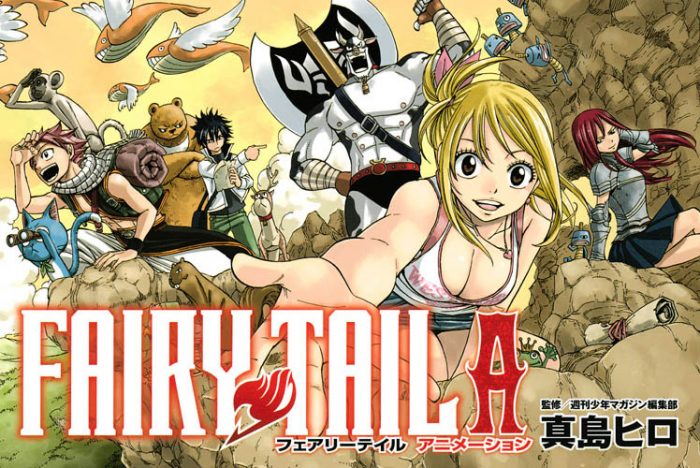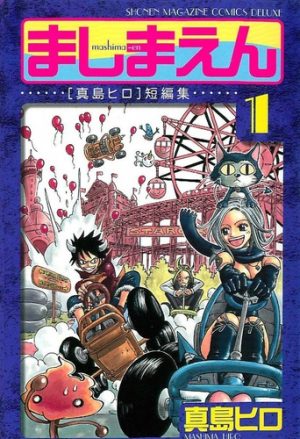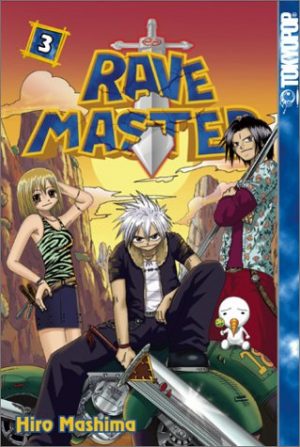
The power of hype and friendship is strong with this one—it’s Hiro Mashima! This prolific mangaka is best known for the shounen classic RAVE (which is called Rave Master in the West) and the bombastic magical quest known as Fairy Tail. If you’re looking for a fantastical story with a mixture of (slightly ecchi) comedy and hype-tastic fight scenes that run on raw emotion instead of cold logic, then Mashima is the author for you.
Today, we’re taking a closer look at Mashima’s career—his debut, his highs and lows, and what he’s up to now that Fairy Tail has ended. What is it that makes his work special, and has he kept up that same quality over his 20 years of publishing? Power up your magic with the help of your friends and join us!
Early Life and Debut

Mashima pretty much always knew that he wanted to be a mangaka, even as a young child. His grandfather collected discarded manga books for him to study and trace, and he entered a school for manga artists shortly after graduating high school. He found it helpful for learning the basics, but hated how restrictive the program was and dropped out so he could improve himself on his own terms.
To inspire his works, he looked to classic shounen manga like Dragon Ball and Kinnikuman. He loved how their battles displayed such distinctive fierceness and sought to create his own style of fierce art that would imbue his fight scenes with a unique flavor. And, considering that Mashima’s battles are often the most exciting and memorable parts of his manga, it looks like he succeeded. The three-way rumble between Natsu, Gajeel, and Laxus during the Battle of Fairy Tail arc feels like an evolution of classic one-on-one fights like Goku vs Frieza, kicking the intensity up a notch and involving much more complex choreography over unusual terrain.
In 1998, Mashima made his debut in Weekly Shounen Magazine with his 60-page one-shot Magician, which won an amateur contest and landed him his first serialization with the fantasy adventure series RAVE.
RAVE and the Search for the Next Hit Series

RAVE stars Haru Glory and his mysterious friend Elie as they travel the world to find the five Rave stones so they can defeat the evil Demon Card group. Yes, it’s a bit of a cliché premise, but the magic is in the details. Haru and Elie develop an unbreakable bond over the course of their adventures, and the multitude of interesting side characters and villains play off of that bond in ways that you’d never expect. It’s an engaging journey that evokes the joy of traveling to far-away lands and learning new things every day. Plus, it features the debut of Plue, a hapless but adorable dog (?) who also shows up in Fairy Tail and wherever else Mashima can sneak him in.
If you’re used to Mashima’s modern art style or watched the anime back in the day (which went for a more conventional early-2000s aesthetic), you would be forgiven for assuming that this manga was drawn by One Piece author Eiichiro Oda. Mashima doesn’t cite One Piece as one of his influences, but his early art does bear a striking resemblance to the lanky, big-mouthed designs favored by his contemporary. That said, RAVE still has a distinctive look—the costumes mix traditional fantasy with street fashion, elements like Sieghart’s face tattoo and Haru’s Ten Commandments sword are still immediately recognizable to this day, and the world itself feels rich and complex.
Despite RAVE’s intense schedule (weekly chapter releases with no hiatuses over six whole years) causing production difficulties for the young mangaka, Mashima stayed true to his vision and ended the series with a bittersweet finale in 2005. Along the way, he was also working on prototypes for his next big project. Fairy Tale (spelled correctly this time) and Monster Soul were shorter comics that contained many aspects of what would eventually become Fairy Tail, but it took another year for the idea to crystallize into what would become Mashima’s most successful series ever.
Fairy Tail Fever!

Fairy Tail is, at its heart, a celebration of fantasy fun. It follows the exploits of the Fairy Tail mage guild as they take on jobs, trash their guildhall, and occasionally save the world. Our main characters are Natsu, a passionate fire mage raised by a dragon, and Lucy, the new girl who recently escaped from her controlling family to follow her dreams. The story evokes feelings of chatting with good friends at the pub and the excitement of finding your path in life. The early arcs of this manga follow RAVE’s lead by focusing on small, character-driven conflicts over the course of many adventures, while the later arcs ramp up the stakes to gigantic struggles where the fate of the world hangs in the balance.
The writing and art are both serviceable (with a few standout moments such as Igneel’s death and Lucy standing up for Loke), but the real strength of this manga lies in its incomparable mastery of hype. The magic system is a little vague, so most fights are decided by whoever has the most determination and faith in their friends. And this may sound like a bad thing, but as long as you aren’t holding Fairy Tail to the same standard of consistency as Fullmetal Alchemist, these fights are an absolute blast to behold. Wendy’s dragonforce transformation in the Tartaros arc and Erza’s final attack against Azuma in the Tenrou Island arc don’t make a ton of sense logically, but with Mashima’s dynamic paneling and badass dialogue, you can’t help but cheer!
During Fairy Tail’s run, Mashima kept himself extra busy with even more projects on the side. He finished up Monster Soul and a Plue spinoff in 2007, wrote a few more one-shots and a tie-in comic for the Monster Hunter games called Monster Hunter Orage, supervised several light novel and manga offshoots of Fairy Tail (except for Fairy Tail Zerø, which he wrote and drew himself), penned crossovers with RAVE and several other manga, and much more. He worked 17 hours a day, six days a week, and almost never took hiatuses. His assistants called him “Superman” for his nigh-inhuman productivity.
His work ethic is certainly admirable, but there’s no denying that Fairy Tail suffered a significant drop in quality near its end. The Alvarez arc was a massive war story with over a dozen villains, conflicting motivations, and unsatisfying resolutions for beloved characters. Fake deaths and contrived solutions littered every fight and the shadowy, nuanced Zeref became just another cookie-cutter villain. By the last few chapters, most fans were only sticking with it out of obligation to a story that barely resembled the magical journey that drew them in to begin with. It’s a depressing end for a manga that held such a special place in so many people’s hearts, but at least the best moments are still there for us to look back on and enjoy.
Are Mashima’s Current Projects Worth Reading?
After finishing Fairy Tail, Mashima seems to have a renewed spring in his step. Like many long shounen series, his magnum opus had fallen victim to power creep and ever-increasing stakes, barring him from writing the charming adventures that started it all. So now he has two main projects, a direct sequel to Fairy Tail called 100 Years Quest and an original sci-fi romp called Edens Zero.
100 Years Quest, which is storyboarded by Mashima and illustrated by another artist named Atsuo Ueda, aims to return to the more character-driven plots of early and mid-Fairy Tail arcs. It’s fun to see what our favorite guild members have been up to since the end of the war, and the new characters are intriguing as well. It’s a bit self-indulgent with fanservice (both the ecchi kind and the nostalgia kind), but we’re happy to see Natsu and the gang go on small-scale adventures again. Edens Zero gives us a similar feeling, but with ostensibly new characters (who still manage to look like carbon copies of Natsu and Lucy) in an outer space setting.
Mashima has always been fond of connecting his works with characters and concepts that cross over between worlds (Etherion, Sieghart’s character design, Plue, etc.), but we’re a bit worried that he’s given up on creating anything new at this point. Both of these current projects feel so derivative of Fairy Tail that they’re more or less inaccessible for new fans. It’s nice to see Mashima not bogged down by the Alvarez arc anymore, but can these new series ever live up to the heights of RAVE and the best parts of Fairy Tail?
Final Thoughts
Regardless of their flaws, RAVE and Fairy Tail deserve to be held up as classics of the shounen genre. Mashima’s outstanding productivity allowed him to create so many beloved characters, gripping stories, and memorable moments in his best years that it far outweighs what he writes nowadays. If you love outlandish action manga with uplifting messages and more hype than the newest blockbuster movie release, then you owe it to yourself to read Mashima’s work.
What did you think of our exploration of Hiro Mashima’s career? What were your favorite hype moments from his manga? Did you read all the way to the end of Fairy Tail? Do you have the urge to watch the RAVE anime again? Let us know in the comments, and thanks so much for reading!

